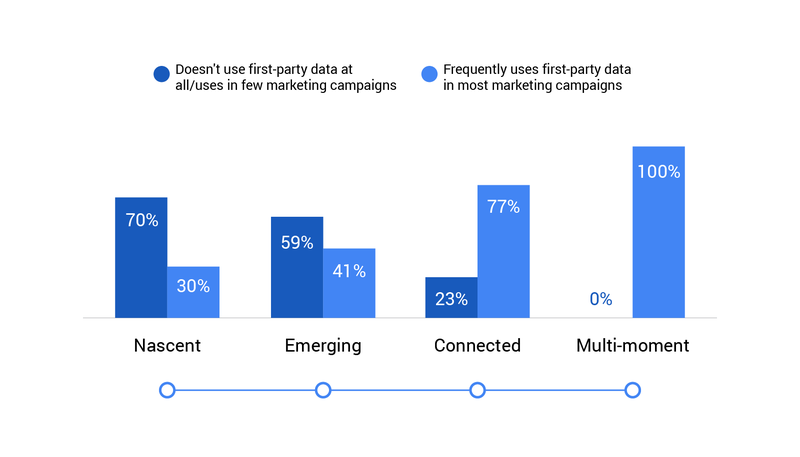As consumer expectations continue to grow in an ever-evolving digital landscape, it is becoming increasingly important for businesses to deliver the right message, to the right person, at the right time; we call this multi-moment maturity..
Utilising first-party data and a strategic plan to identify and convey a brand message at most valuable moments throughout a consumer’s interactions with a brand is critical to achieving multi-moment maturity.
What is first-party data again?
First-party data is proprietary information collected directly from the user with consent. It derives directly from the customer’s behaviours, actions and interests across a platform, through loyalty or subscription programs, social information and from customer interactions.
We’ve discussed in other posts but it doesn’t hurt to reiterate it one more time – as third-party cookies are eliminated from the web, first-party data is a crucial element to gaining a competitive edge online.
Multi-moment maturity is synonymous with….
Dynamic executions across multiple channels that are optimised towards individual customer business outcomes and transactions.
These businesses have robust linking between online and offline journeys and an omni-channel engagement strategy. They have an agile approach to audience management and automation and deeply personalised messaging in their customer experience
This evolution is rippling across the world wide web as marketers look to implement new technologies to responsibly gather and utilise first-party data to provide the experience users desire with the privacy they deserve.
In a recent study:
Google partnered with Boston Consulting Group to understand how advertisers are using first-party data to successfully drive business and achieve multi-moment maturity.
Ninety per cent of companies who took part in Google’s research agree first-party data is critical to marketing success however only one per cent are utilising that data to fully deliver cross-channel experiences.
Many believe the sheer collection of data correlates to success however unnecessary information not only burdens the customer but can increase the cost of technology and management strategies and the risk of privacy breaches.
9 out of 10 companies who took part in the research agreed that first party data is critical to marketing success however only 2% are utilising that data to fully deliver cross-channel experiences.
Just as unnecessary data collection can be the catalyst for failure, so too can a poorly executed strategy.
Google found brands that experienced success, developed a comprehensive strategy, tested and measured results to determine the best activation method, and built robust in-house capabilities while outsourcing and working with strategic partners for expertise.
These businesses invested significant time in developing clear strategic goals for the collection and data, identified essential information and calculated associated risks and costs to develop a pathway forward.
XPON CO-CEO Chris Rozic says,
2020 showed everyone just how important it is to have confidence in your data and analytics. It demonstrated the consequences of not investing in business critical foundations that drive your business reporting and customer activations.

Digital transformation is about more than simply data
While the collection of first-party data through machine learning, artificial intelligence and automation allows marketers to gain an in-depth understanding of the customer journey, it is critical to align a strategy to your people, culture and goals.
“The hardest step in progressing digital marketing maturity can often be just getting started,” Chris Rozic says.
Once the right people and data are together . . . the outcomes of maturity projects can make a significant impact.
Only two percent of businesses are realising the full potential of data-driven marketing and while digital marketing maturity looks different at every stage, a key differentiator between ‘nascent’ and ‘multi-moment’ is the unification of first-party data.
“We haven’t seen a brand get to multi-moment maturity overnight. It requires ongoing commitment and reflection. However, it is encouraging to see so many brands in Australia taking steps to meet today’s consumer expectations.”